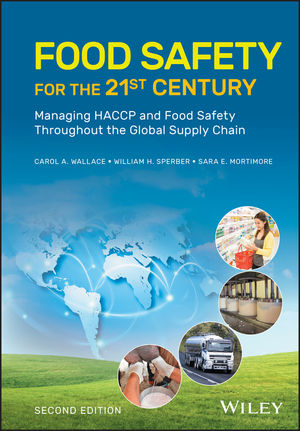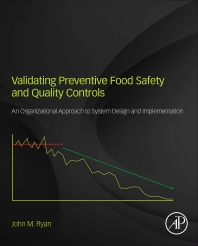Refrigerated Foods Report: Food Safety Update
Listeria monocytogenes is a pathogenic bacterium that can contaminate foods and cause a mild illness or, in some cases, a severe life-threatening disease. Some of the foods that have been implicated in listeria outbreaks have been ready-to-eat foods (RTE), which sometimes can support the growth of the organism to high numbers.

Listeria monocytogenes is a pathogenic bacterium that can contaminate foods and cause a mild illness or, in some cases, a severe life-threatening disease. Some of the foods that have been implicated in listeria outbreaks have been ready-to-eat foods (RTE), which sometimes can support the growth of the organism to high numbers.
Although the U.S. Food and Drug Administration (FDA) currently regards foods with any level of L. monocytogenes to be adulterated, European countries and Canada permit the finding of up to 100 cfu of L. monocytogenes per gram of food for RTE foods that do not support listeria growth. This regulatory standard has been shown to be protective of public health and has several advantages.
On February 7, 2008, the U.S. FDA published “Draft guidance for industry on the control of L. monocytogenes in refrigerated or frozen RTE foods” (find the document here). Here, it is noted that with rare exceptions, foods involved in outbreaks of listeriosis have been those that support growth of the pathogen and are ready-to-eat.
This draft guidance would establish a regulatory limit of 100 cfu/g for L.monoctyogenes in foods that do not support growth of the microorganism. When complete, this document will represent FDA’s current thoughts on L. monocytogenes in RTE foods.
The Refrigerated Foods Association (RFA) agrees with the concept that a risk-based approach to L. monocytogenes involving a regulatory limit of 100 cfu/g of the microorganism is consistent with consumer protection. It is generally acknowledged that low levels of L. monocytogenes in foods that do not support its growth present little risk of harm to consumers.
Setting a tolerance level also provides manufacturers with more realistic requirements than the current “zero tolerance” policy. Attempting to keep L. monocytogenes out of a food processing facility is a constant battle. Because L. monocytogenes is ubiquitous in the environment and can readily enter a food processing facility through raw materials, it is nearly impossible to completely prevent contamination. Furthermore, the pathogen can grow in cool, moist conditions, allowing it to sustain itself in facilities, despite stringent sanitation efforts. Given L. monocytogenes’ prevalence in the environment and the fact that it causes the greatest health risk under conditions that support its growth, one of the most logical ways to reduce the incidence of listeriosis would be to render foods less amenable to the pathogen’s growth.
Focusing on the concentration instead of mere presence of L. monocytogenes would encourage manufacturers to develop better means of detecting and controlling virulent pathogens. The current “zero tolerance” policy - as “IFT’s Expert Report on Emerging Microbiological Food Safety Issues” describes - discourages manufacturers from testing for L. monocytogenes due to concern over the regulatory consequences of possible detection.
We have shown that this tolerance will continue to protect the public’s health and would aid the manufacturer in compliance. Read this column next month to find out how such a program would be implemented.
Martin Mitchell is the technical director of the Refrigerated Foods Association and has served in that role for the last 26 years. He also is the managing director of Certified Laboratories in Plainview, N.Y.

Allowing small amounts of Listeria monocytogenes
to be present in ready-to-eat foods may actually make them safer, according to
the Refrigerated Foods Association.
Listeria monocytogenes is a pathogenic bacterium that can contaminate foods and cause a mild illness or, in some cases, a severe life-threatening disease. Some of the foods that have been implicated in listeria outbreaks have been ready-to-eat foods (RTE), which sometimes can support the growth of the organism to high numbers.
Although the U.S. Food and Drug Administration (FDA) currently regards foods with any level of L. monocytogenes to be adulterated, European countries and Canada permit the finding of up to 100 cfu of L. monocytogenes per gram of food for RTE foods that do not support listeria growth. This regulatory standard has been shown to be protective of public health and has several advantages.
On February 7, 2008, the U.S. FDA published “Draft guidance for industry on the control of L. monocytogenes in refrigerated or frozen RTE foods” (find the document here). Here, it is noted that with rare exceptions, foods involved in outbreaks of listeriosis have been those that support growth of the pathogen and are ready-to-eat.
This draft guidance would establish a regulatory limit of 100 cfu/g for L.monoctyogenes in foods that do not support growth of the microorganism. When complete, this document will represent FDA’s current thoughts on L. monocytogenes in RTE foods.
The Refrigerated Foods Association (RFA) agrees with the concept that a risk-based approach to L. monocytogenes involving a regulatory limit of 100 cfu/g of the microorganism is consistent with consumer protection. It is generally acknowledged that low levels of L. monocytogenes in foods that do not support its growth present little risk of harm to consumers.
Setting a tolerance level also provides manufacturers with more realistic requirements than the current “zero tolerance” policy. Attempting to keep L. monocytogenes out of a food processing facility is a constant battle. Because L. monocytogenes is ubiquitous in the environment and can readily enter a food processing facility through raw materials, it is nearly impossible to completely prevent contamination. Furthermore, the pathogen can grow in cool, moist conditions, allowing it to sustain itself in facilities, despite stringent sanitation efforts. Given L. monocytogenes’ prevalence in the environment and the fact that it causes the greatest health risk under conditions that support its growth, one of the most logical ways to reduce the incidence of listeriosis would be to render foods less amenable to the pathogen’s growth.
Focusing on the concentration instead of mere presence of L. monocytogenes would encourage manufacturers to develop better means of detecting and controlling virulent pathogens. The current “zero tolerance” policy - as “IFT’s Expert Report on Emerging Microbiological Food Safety Issues” describes - discourages manufacturers from testing for L. monocytogenes due to concern over the regulatory consequences of possible detection.
We have shown that this tolerance will continue to protect the public’s health and would aid the manufacturer in compliance. Read this column next month to find out how such a program would be implemented.
Martin Mitchell is the technical director of the Refrigerated Foods Association and has served in that role for the last 26 years. He also is the managing director of Certified Laboratories in Plainview, N.Y.
Looking for a reprint of this article?
From high-res PDFs to custom plaques, order your copy today!





